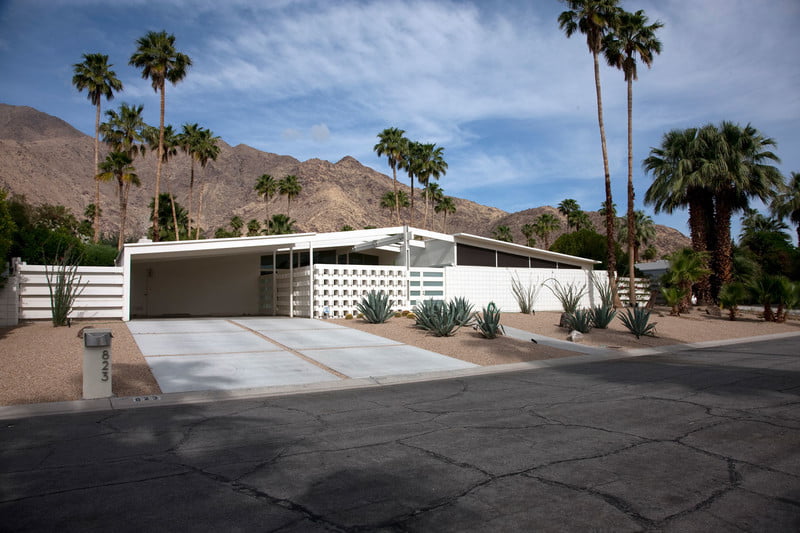
Although you haven’t realized it yet, you’ve most likely seen mid-century modern (MCM) designs at someone’s house or the show Mad Men. Thanks to a recent revival of the style, it’s the trendy look everyone now desires for their home. That leather and wood armchair you saw at a friend’s house? That’s an icon of the mid-century modern. The stylish Palm Springs home you daydream of? That’s also quintessential mid-century modern design.
If you’ve been trying to achieve this timeless, form-follows-function interior design style for your home, consider yourself lucky. Below is our comprehensive guide to everything mid-century modern, from the principles behind the design to where to shop.
Related Guides
Principles
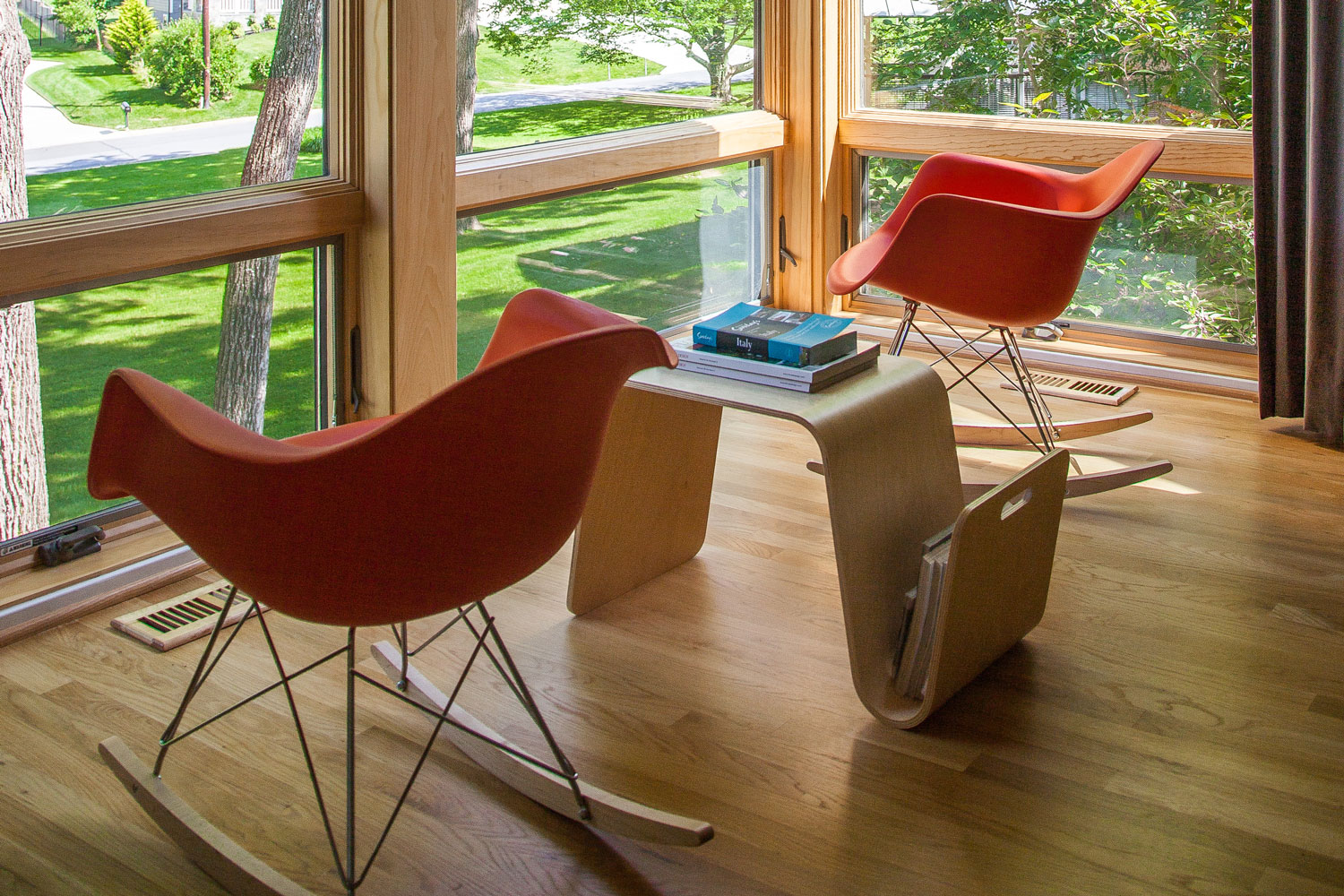
Mid-century modern is one of the most popular architectures and interior design styles. While it took a dip in the 1980s, there has been renewed interest in recent years. Now, this iconic style is back but with a trendy twist that has been dubbed “mid-century modern revival.”
This is a timeless style with a focus on creating a strong connection to nature. Thanks to low-profile, clean-lined furnishings; an earth-tone-inspired color palette; and little ornamentation, mid-century modern resonates with many. There’s a reason behind the style’s enduring popularity: The principles that guide it have been shown to improve your mood.
Large rooms filled with natural light are proven to make people happier. An earth-tone color palette can lower stress and increase productivity. There is a strong connection to nature, with many homes featuring walls of glass that slide open to let in plenty of fresh air. Large windows carefully placed to frame views to the outside create a calming feeling.
While mid-century modern spanned several decades, it saw its peak in the middle of the 20th century (now the name makes a bit more sense, right?). During this peak in the 1950s and ‘60s, people were hopeful for the future. World War II was over, the economy was on an upswing, and average Americans were upgrading to larger homes. This meant more focus was being put into homes and furnishings that had high-end style but could easily be reproduced. Homes by developer Joseph Eichler and architects like Richard Neutra and furniture by Florence Knoll, Charles and Ray Eames, and Eero Saarinen (creator of the Trans World Airlines Flight Center) answered that need.
While the strong connection to nature was the driving force behind the movement, there was a parallel idea happening that focused on designing for the future. Lucite and molded fiberglass furniture made their debuts, and the round room with a sunken center became a thing (for better or for worse). The result of these parallel design directions was a very broad range of looks coming from the mid-century modern movement.
Architecture
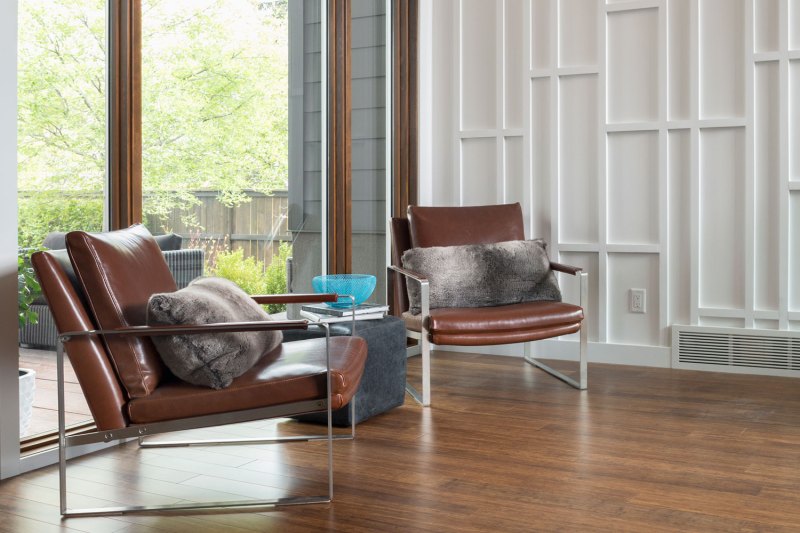
From the outside, many mid-century modern homes can be easily spotted thanks to the roofline. Usually single-story or split-level, the homes feature flat or slightly angled roofs. The roof often overhangs or cantilevers to create a strong horizontal plane that draws the eye out to the surrounding landscape — again, the connection to nature being a driving force of the design. Clean, crisp lines were a signature of this style, and that was reflected in the structure of the buildings of this time.
Mid-century modern brought us some innovative ideas that are still used to this day. You can thank this period for the creation of the open floor plan. Walls disappeared, making way for conversational spaces and creating visual tunnels through rooms framed by walls of glass on either side. These open spaces were complemented by vaulted or double-height ceilings, creating a sense of grandeur even in the smallest of homes.
Natural light was key to creating a proper mid-century modern home. Windows were placed wherever they fit, oftentimes using clerestory windows at the front of the home to let in light but maintain privacy. Meanwhile, the back of the home was typically made of walls of sliding glass, which transformed social spaces into open-air rooms.
With kitchens now being open to the social areas, they received more attention than in the past. Rather than being purely functional, kitchens became another chance to show off some style. Appliances came in colors to match the cabinetry, which had now morphed to include built-ins above the counters. Islands were introduced to create another spot to socialize while preparing meals. And the overall size of kitchens slowly began to increase, taking up a bigger percentage of the home’s footprint than in decades past.
Furniture, Colors, and Patterns
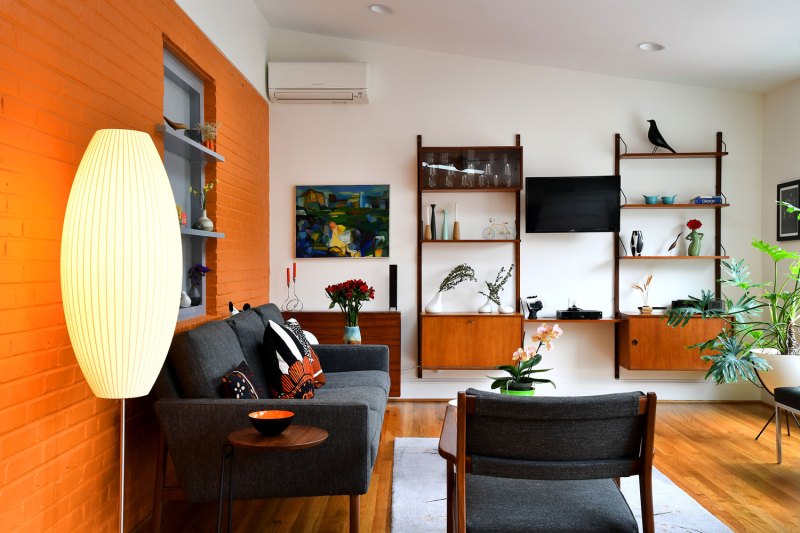
The furniture of this time period is what we are all going crazy for. The pieces are iconic and have been replicated over and over again. The key characteristics of MCM furnishings are clean lines, low profiles, and tapered legs. There was also a combining of natural and synthetic materials, with everything from wood to lucite being used to produce innovative pieces. The highly ornamented furniture of the past was stripped away, with the “decoration” coming from the beautiful shapes of the pieces.
Beyond the iconic furniture pieces that came from the mid-century modern movement, the period is known for its color palette. While the current revival trend focuses on white walls with pops of color, original mid-century modern homes were filled with earthy tones. From burnt orange to mustard yellow to olive green, many of the colors were deep and not the bright vibrant colors being used today. However, these colors were paired against natural wood and stone to create a sharp visual contrast that, in conjunction with the natural light flooding rooms, created a cozy and inviting space.
With all of the focus being on nature, mid-century modern designs had very few ornate details. The few pieces that did include patterns, like area rugs or wall art, mostly focused on geometric shapes that complemented the clean lines of the furniture and architecture.
Notables
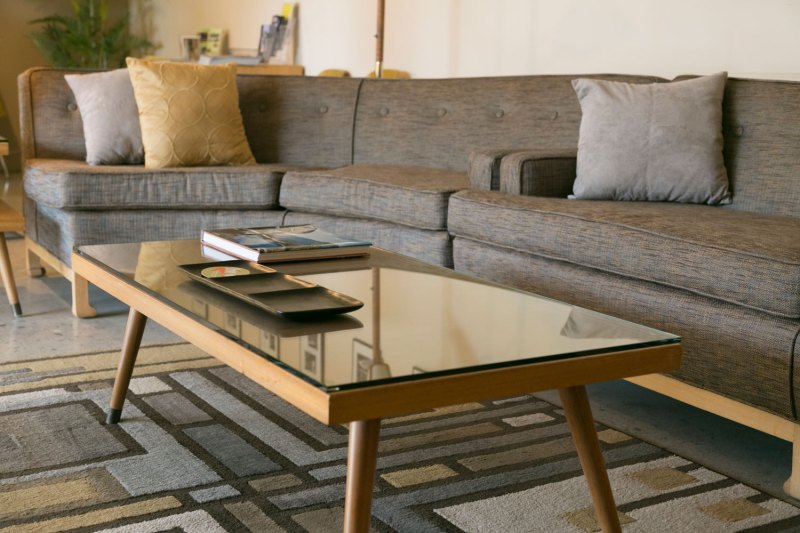
Some of the most famous names in home and furniture design came out of the mid-century modern movement. Along with the designers listed above, mid-century modern gave us people like John Lautner, Arne Jacobsen, Albert Frey, and Mies van der Rohe, to name just a few. Their visionary creations changed the way people lived in postwar America. Their designs are so iconic that we still seek them out to this day. The sense of style and comfort are timeless, which is why the mid-century modern revival trend took off the way it did and why it will still be here for years to come.
Where to Shop
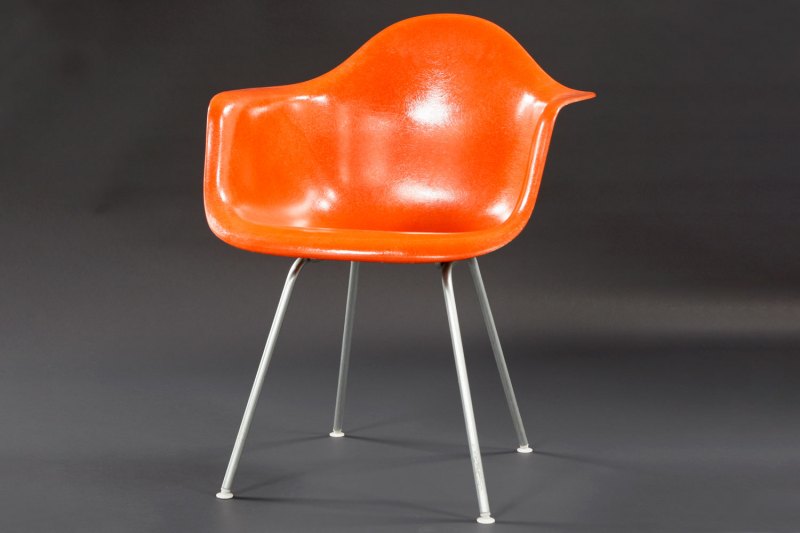
Budget
has a large selection of mid-century modern revival furniture and home goods with great quality at affordable prices. The store has everything you need to deck out your space in a timeless look with that trendy contemporary twist the brand is known for.
Middle of the Line
says it right in the name — all of the company’s items are mid-century modern revival, making shopping there a breeze for the design beginner. Items range in quality, so be sure to double-check customer reviews before hitting Add to Bag.
High-End
For those who love authenticity, look no further than Chairish


